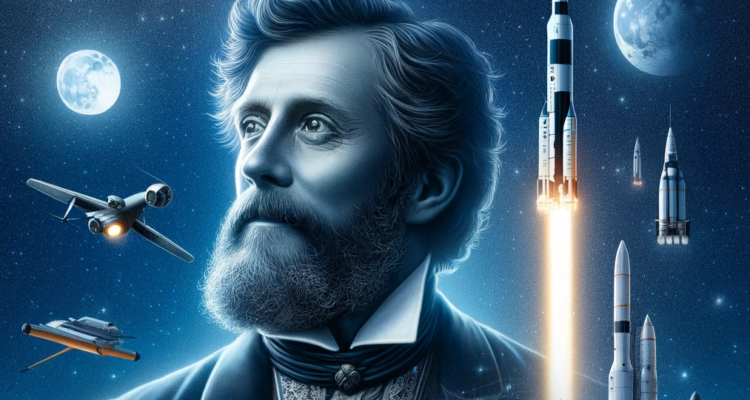Science fiction has long been a realm of boundless imagination, a place where authors conjure visions of the future, pushing the boundaries of what is possible. Remarkably, these imaginative tales often transcend the pages of fiction, sparking real scientific discoveries and technological advancements. As we delve into the annals of science fiction history, we find that authors like Jules Verne, Karel Capek, Jay Williams, William Grove, and John W. Campbell have left an indelible mark on the course of scientific progress.
Jules Verne’s Submersible Vision
In the late 19th century, Jules Verne penned the timeless classic “20,000 Leagues Under the Sea” (1869), which introduced readers to the enigmatic Captain Nemo and his extraordinary submarine, the Nautilus. Little did Verne know that his vivid description of underwater exploration would serve as a catalyst for real-life submarine development. Verne’s vision inspired generations of inventors and engineers, ultimately contributing to the creation of functional submarines.
A Moonshot Idea: Verne’s “From the Earth to the Moon”
Jules Verne’s literary prowess didn’t stop at the sea’s depths. In “From the Earth to the Moon” (1865), Verne’s characters embark on a daring mission to the moon using a massive cannon. While the notion of shooting a spacecraft to the moon may have seemed far-fetched in the 19th century, Verne’s vision ignited the imaginations of rocket scientists in the 1960s. The audacious concept of lunar travel via rockets laid the groundwork for humanity’s iconic moon landing in 1969.
Karel Capek and the Birth of the Robot
In 1920, Czech playwright Karel Capek introduced the world to the term “robot” in his groundbreaking play “R.U.R.” (Rossum’s Universal Robots). Capek’s imaginative exploration of artificial life and humanoid automatons laid the conceptual foundation for the development of robots in the real world. Today, robots are ubiquitous, serving vital roles in manufacturing, healthcare, and more.
Jay Williams’ Vision of Unmanned Flight
Fast forward to the 1970s when author Jay Williams penned “Danny Dunn, Invisible Boy” (1974), a tale featuring an invisibility cloak and drones. While the invisibility cloak may still elude us, Williams’ portrayal of drones anticipated the development of unmanned aerial vehicles (UAVs). Drones have since become indispensable tools in industries ranging from photography to surveillance and even package delivery.
William Grove’s Glimpse into Artificial Intelligence
In 1889, William Grove authored “Wreck of the World,” a science fiction work that delved into the concept of artificial intelligence. Grove’s narrative about a ship’s AI system demonstrated prescience that would eventually bear fruit in the realm of computer science. Today, AI systems like Chat-GPT, Siri, Alexa, and autonomous vehicles exemplify the real-world manifestation of Grove’s imaginative ideas.
John W. Campbell’s Warp Drive Dreams
John W. Campbell, a luminary of science fiction’s Golden Age, wrote “Islands of Space” in 1957. In this novel, Campbell envisioned the tantalizing possibility of warp drive and faster-than-light (FTL) travel. While FTL remains a challenge, scientists and physicists have been inspired by Campbell’s vision, leading to ongoing research into theoretical propulsion systems that may one day make interstellar travel a reality.
The history of science fiction is replete with authors whose visionary tales have sparked innovation in unexpected ways. As science continues to push the boundaries of what is possible, it is worth acknowledging the debt of gratitude we owe to these pioneers of the imagination. The bridge between science fiction and real science is a testament to the boundless potential of human creativity, showing us that sometimes, reality can indeed follow the path of fiction.



Leave a Reply